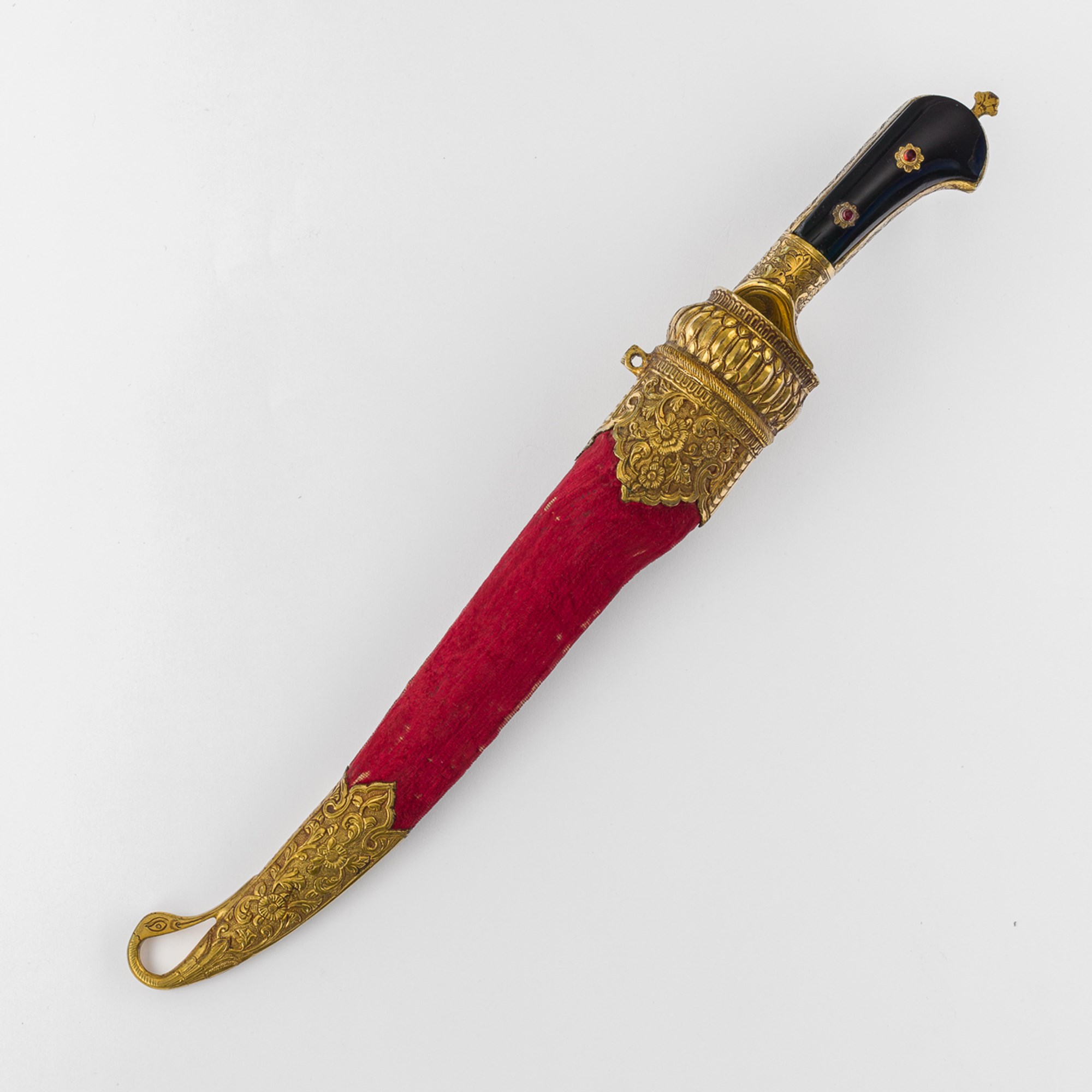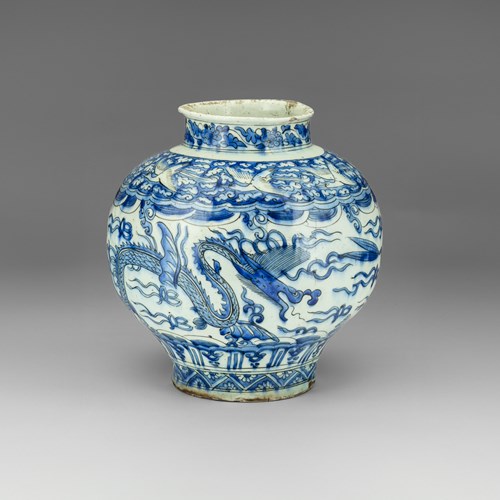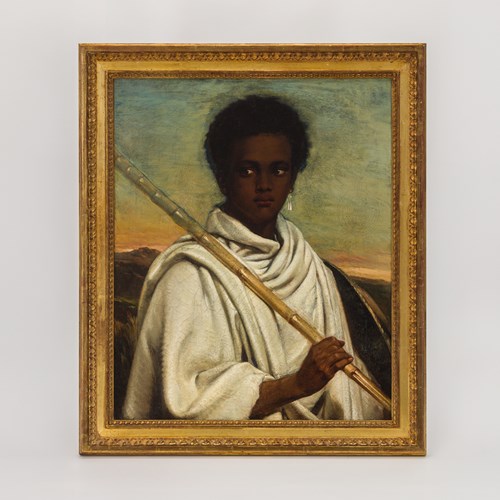Marketplace
Kutch Peshkabz Dagger
A peshkabz dagger from Bhuj, Kutch (now Kachchh) with a single-edged watered-steel blade. Gilt-copper panels are applied at locket and chape of the sheath, which is wooden and covered with red velvet. The sheath terminates with a duck head finial. The hilt is formed from a thick false tang decorated with flowers, between dark green glass grips. Each side is decorated with two gems in rosette collar mounts. The bolster is is decorated with a curling acanthus motif, a favourite motif of the Mughals. The gold is worked in the distinctive Kutch style, with floral repoussé decoration on a stippled background.
A near identical example in the Victoria & Albert Museum, London (accession no. 3390&A/(IS)), is dated to 19th-century Bhuj. Another peshkabz in the same museum (accession no. 3389&A/(IS)), also attributed to 19th-century Bhuj, has a similar acanthus leaf on its gilt-copper bolster as well as similar pattern on its false tang.
A dagger in the Wallace Collection, London (accession no. OA2192), identical to ours but for blue coloured glass grips is dated to the 18th century.
The most famous workshop in Bhuj was that of Oomersee Majwee workshop, which produced ornate silver and work in the 1890s. A pepper-pot in the British Museum (accession no. 2011,3014.28), dated to 1890 and with the mark of that workshop, features very similar flower patterns to our dagger.
The most famous examples of arms and armour from Bhuj is the eponymous axe-knife, many of which feature the same stippled gilt copper decoration. See, for example, RCIN 11434 in the Royal Collection Trust.
More artworks from the Gallery







_T638772029064645252.jpg?width=500&height=500&mode=pad&scale=both&qlt=90&format=jpg)

